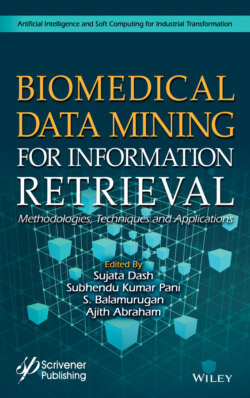Читать книгу Biomedical Data Mining for Information Retrieval - Группа авторов - Страница 21
1.3.4 Mortality Prediction
ОглавлениеAfter data pre-processing, normalization, feature extraction and feature reduction, different models are employed to predict the patient’s mortality in an in-hospital stage and calculate the accuracy. The models predict either patient will survive or die. This is determined by using classification technique as mortality prediction is a binary classification problem. This process is done step by step as shown in Figure 1.1.
Table 1.2 Time series variables with physical units [30].
| S. no. | Variables | Physical units |
|---|---|---|
| 1. | Temperature | Celsius |
| 2. | Heart Rate | bpm |
| 3. | Urine Output | mL |
| 4. | pH | [0–14] |
| 5. | Respiration Rate | bpm |
| 6. | GCS (Glassgow Coma Index) | [3–15] |
| 7. | FiO2 (Fractional Inspired Oxygen) | [0–1] |
| 8. | PaCo2 (Partial Pressure Carbon dioxide) | mmHg |
| 9. | MAP (Invasive Mean arterial blood pressure) | mmHg |
| 10. | SysABP (Invasive Systolic arterial blood pressure) | mmHg |
| 11. | DiasABP (Invasive Diastolic arterial blood pressure) | mmHg |
| 12. | NIMAP (Non-invasive mean arterial blood pressure) | mmHg |
| 13. | NIDiasABP (Non-invasive diastolic arterial blood pressure) | mmHg |
| 14. | Mechanical ventilation respiration | [yes/no] |
| 15. | NISysABP (Non-invasive systolic arterial blood pressure) | mmHg |
